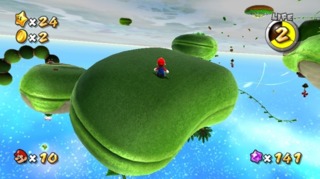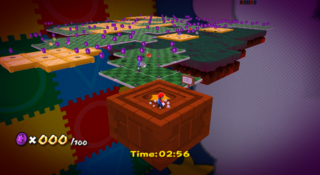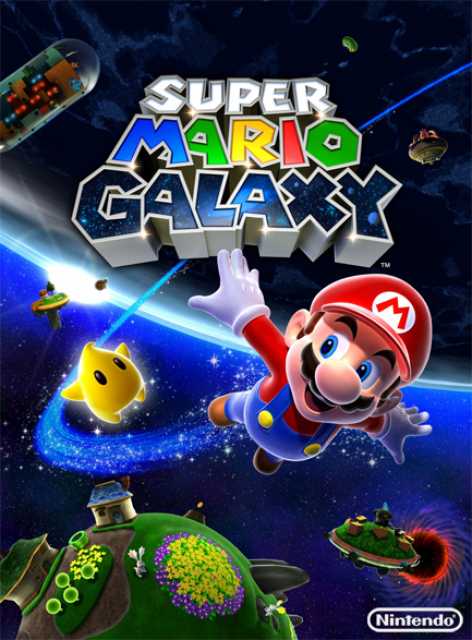Welcome to “Gaming Memories,” a blog series where I reminisce about my favorite video games. I will slowly but surely get to every game on the list, and speak to why each holds a special place in my heart. That not only means I’ll talk about why I think each is a great game that speaks to my tastes, but also where and how it affected me in a larger context. I hope you enjoy, and thanks for reading.
It was a bad week. I failed a test, was physically injured, and had some social troubles going on. I sat down on a rainy Friday evening in November of 2007, and turned on my Nintendo Wii to start playing Super Mario Galaxy. I just need to rest a little, I initially thought. After a brief introduction, I took my first long jump into the gravitational pull of Good Egg Galaxy. As I circled around its brief orbit, and took in the sights and sounds of this wondrous and magical new celestial frontier, my spirits were lifted. I had never seen anything like it, and I spent the next two days forgetting my worries while exploring the cosmos.

That’s what made Super Mario Galaxy stand out: despite being part of a decades-old franchise by 2007, it still felt as fresh and inventive as Mario ever had. Nintendo games, at their best, show you an old thing from a new angle, which results in a new way to play. Mario Galaxy was Nintendo in peak form. It embraced a new setting, and the new physics that came with it, with wide-eyed curiosity, and that led to all sorts of new ways to think about how Mario runs and jumps. Previously simple platforms now had more to consider, as gravity could shift directions between jumps, platforms themselves could shift their position at regular intervals, or you could find yourself in a circular orbit amidst a cluster of small planetoids. Hell, sometimes your best option was to launch yourself out into the empty sky, all to get caught in another gravity field dangerously far away. Such actions may seem like small tweaks on the surface, but they are precisely the kind of subtle changes that made the basic act of jumping -- one of gaming’s oldest actions -- feel exciting all over again. Mario Galaxy was by no means a radical reinvention of the platformer. Rather, in true Nintendo fashion, it presented platforming from an angle we had never viewed it from before.
But it’s not just the gravity effects themselves that made Super Mario Galaxy so fun to play. The game’s vibrant art style was gorgeous, and its whimsical soundtrack remains an all-time favorite that I still listen to regularly. Artistically it was a noticeable step up for Mario, and perhaps more importantly, Mario’s movement also felt better than it ever had in a 3D Mario game; and maybe better than any 3D platformer before it. His large array of jumps, from triple jumps to wall jumps to long jumps, felt spot on, with timing windows and animations honed to a tee. Such flexible and precise movement is always desired and fun, but it was even more impressive when combined with Mario Galaxy’s new physics. When Mario’s jump is affected by all sorts of new and different forces, such as the gravitational pull of a floating space rock, you want to feel confident that you can jump in and experiment. In Mario Galaxy I had that confidence in full, which encouraged me to play around with all sorts of maneuvers, and develop a real sense of mastery over the course of the game. This was especially rewarding in the game’s later stages, which grew to be fairly challenging; I have fond memories from tackling Mario Galaxy’s toughest gauntlets.

Finally, and perhaps the single trait I remember Super Mario Galaxy most for, its level design was impeccable. Not only were its levels expertly constructed, but its galaxy theming cleverly allowed for an unprecedentedly large and diverse set of them. It made perfect sense to have an entire level devoted to collecting a single star, and showcase its own gameplay idea that you never encountered anywhere else. Yet it also had plenty of larger levels that you returned to for multiple stars, which could showcase a more robust set of ideas in a larger space. This struck a great balance between focused challenges and exploratory platforming, which helped the pacing tremendously. More than that, the sheer variety of things you did to earn stars within this structure was staggering; you rarely did the same thing for more than one of Mario Galaxy’s 120 stars. This was another subtle but important way that Mario Galaxy distinguished itself from previous 3D platformers, Mario or otherwise. There were almost no repeated challenges or fluff, which made nearly every level and every star feel worthwhile and interesting. Mario Galaxy never stopped searching for new ways to play from start to finish, and managed to seamlessly flow from one fun challenge to the next. Terms like variety, pacing, and level design aren’t flashy or easy to define. But Mario Galaxy showed a clear understanding of these design concepts, and that’s a big reason why I hold it in such high esteem.
Nintendo often gets a lot of flak for making the same games time and again, and relying on their core franchises too much. I’ve been critical of this as well, but when they do it right, they create great new ways to play seemingly old things. Super Mario Galaxy was a prime example. At its core, this was quintessentially a Mario game: you ran, you jumped, you stomped on goombas and you collected stars. Yet we had never seen Mario quite like this. It built on the strong Mario fundamentals with new physics, gave its art, music, and controls a big facelift, and then placed it all within some of the most well-designed levels the genre has ever seen. The result was something both familiar and new, both comforting and thoughtful, and comprehensively joyful. Super Mario Galaxy was a magical game that grabbed my heart when it was down, and lifted it up into the stars.

Log in to comment